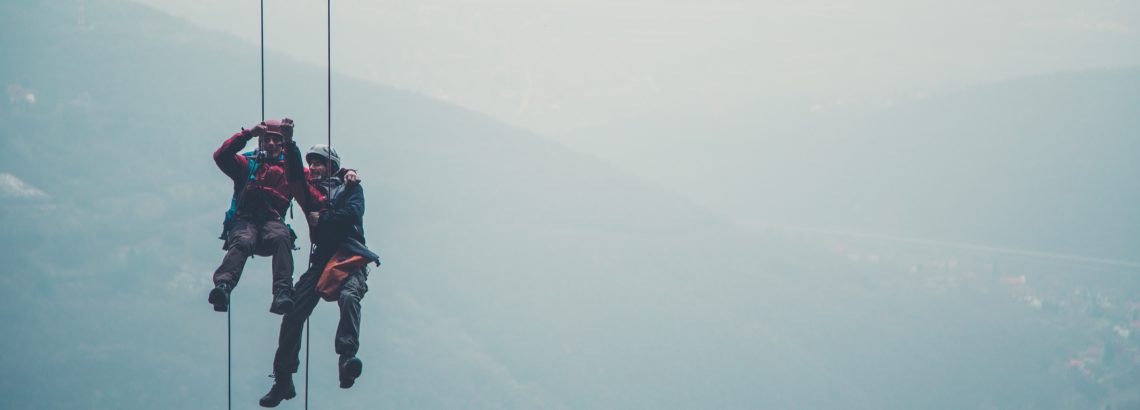
Summer is prime time for traveling, and more people will be out taking selfies on their adventures. However, recent fatalities caused while taking selfies have spurred concerns over this popular habit. In fact, CNN reports that more than 250 people around the world have died since 2011 while trying to take a dangerous selfie. The United States is ranked third in the world for such deaths. Here is a guide on what to watch out for and stay safe during your travels this season.
Dangerous Selfie Habits
The Journal of Family Medicine and Primary Care published a study regarding selfie deaths that occurred from October 2011 to November 2017. According to the study, the leading cause of selfie deaths is drowning. This often occurs when someone is trying to take a selfie at a beach and gets washed away by the waves or takes a picture on a boat and then falls off. The second leading cause of these deaths is due to items dubbed “transport,” such as taking pictures in front of a moving train. Next, were falls. For example, a tourist visiting the Grand Canyon tripped while taking a selfie and fell to his death after more than a 1,000-foot drop. Another man died in the Yosemite National Park after falling while trying to take a selfie. Tied with falls were deaths involving fires. The United States led in the number of selfie deaths involving a firearm, which often occurred when people accidentally shot themselves while posing with a gun. Another eight people died while taking pictures with dangerous animals.
Reasons for Selfie Deaths
Selfie deaths are completely preventable. They often involve people placing themselves at unnecessary risk while trying to snap the perfect photo. Although women take more selfies than men, the authors of the study found that men had more fatal accidents of this nature than women, likely because they take greater risks. Approximately 72% of selfie deaths were male victims. Additionally, most were younger people under the age of 30. Despite the high number of such deaths, the study believes the problem is underreported. Investigating authorities may not report a selfie death. In other countries, these types of accidents may not be reported at all.
Another factor that leads to these injuries is that many of these pictures often involve tourists in which people are in a different mindset and not really looking for possible hazards. They may not be aware of their surroundings.
Part of the problem is also the social nature that corresponds to social media. Tourists and young people may try to complete challenges or compete against each other in an attempt to appear cool. The study authors report that although selfies are not inherently dangerous, the “human behavior that accompanies” them is. The study suggests that people be educated about risky places where selfies should not be taken and risky behaviors that can potentially lead to their harm.
Tips on Taking Self Selfies
Here are some guidelines to help you take safe selfies this season:
Stay Focused on Your Surroundings
Many selfie fatalities and injuries occur when the person taking the photo is not paying attention to the surroundings. Not paying attention or being distracted can cause tragic results. Watch where you are going and pay more attention to your surroundings than the perfect shot. Watch your step and keep your eyes on the path in front of you and not your camera while you are walking. Stay still while taking a picture and be sure you have firm footing.
Stay on Established Paths
Public lands may have specified trails, safety railings and barriers. These are there for a reason. Stick to the official paths and do not try to go in an area that has specifically been cornered off, whether you are in a national park or an urban setting. Follow any posted rules.
Be Careful Around Wildlife
Many people may want to capture wildlife in their pictures, but it is important to remember that these animals are not pets. In 2015, three out of five people who were gored by bison in Yellowstone National Park within a three-month period of time were taking pictures at the time of the incident. Some individuals who climbed over barriers at zoos were also injured.
In natural parks, safaris and other locations, there may be few barriers separating people from the wildlife, but this does not mean that people should get near them. It is also important to remember that this is the animals’ natural habitat and they may be protective around them. Many animals are also unpredictable or can become easily startled.
Other tips for pictures in wildlife include:
- Follow all park rules
- Stay at least 100 yards away from dangerous wildlife and at least 25 years away from other wildlife
- Stay within the established barriers
- Use a zooms lens instead of hedging closer to moving animals
- Slowly back away from approaching animals
Don’t Hold a Loaded Weapon
While some people may think that it is cool to pose on social media with an armed weapon, many of these incidents have resulted in unintentional injuries or fatalities when the person posing accidently shoots the gun. Avoid this possibility by not posing with a weapon. If you do choose to pose, be sure the weapon has no ammunition in it, including in the chamber.
Don’t Take Selfies While Driving
Social media challenges may encourage people to dance while driving, but it is important to always practice safe driving techniques. Thousands of people are killed every year in motor vehicle accidents. Keep both hands on the steering wheel while driving. Look both ways before crossing the road. If you see a photo op, pull over to a safe spot and then take the picture.
You can get more tips on taking safe selfies by visiting the National Park Service’s website.
